
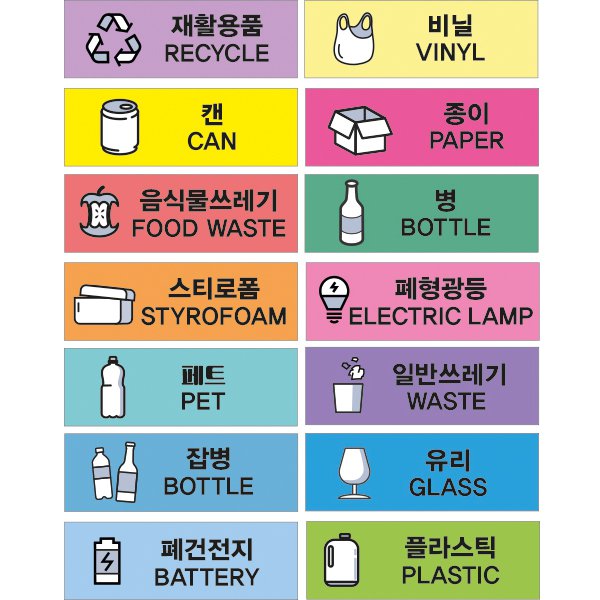
How might we create a design that will improve and modify current recycling behavior effortlessly and instinctually?
Given the scope of the project, we learned more about the recycling behavior within the Yonsei campus and surrounding Sinchon area, with a majority user base of young students. We conducted primary research to find patterns of behavior, slips, and general insights from this demographic that could inform our design decisions.
.png)
Yonsei/ Sinchon area's recycling systems and subsequent problems with overflow, incorrect recycling, etc.
We conducted a survey of Yonsei students in order to better understand our target audience’s recycling behavior. From 32 participant responses, we were able to pull some key insights.

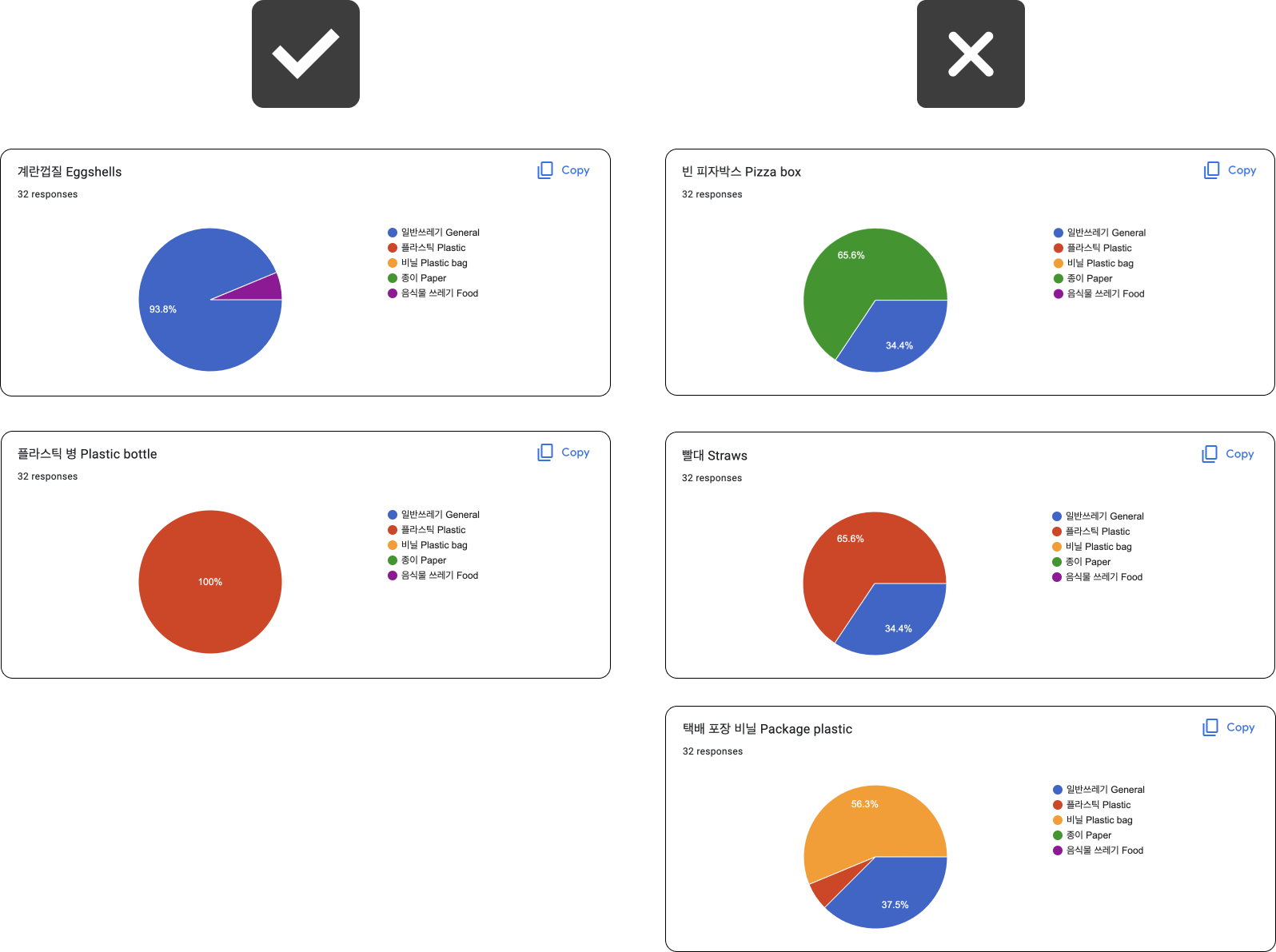
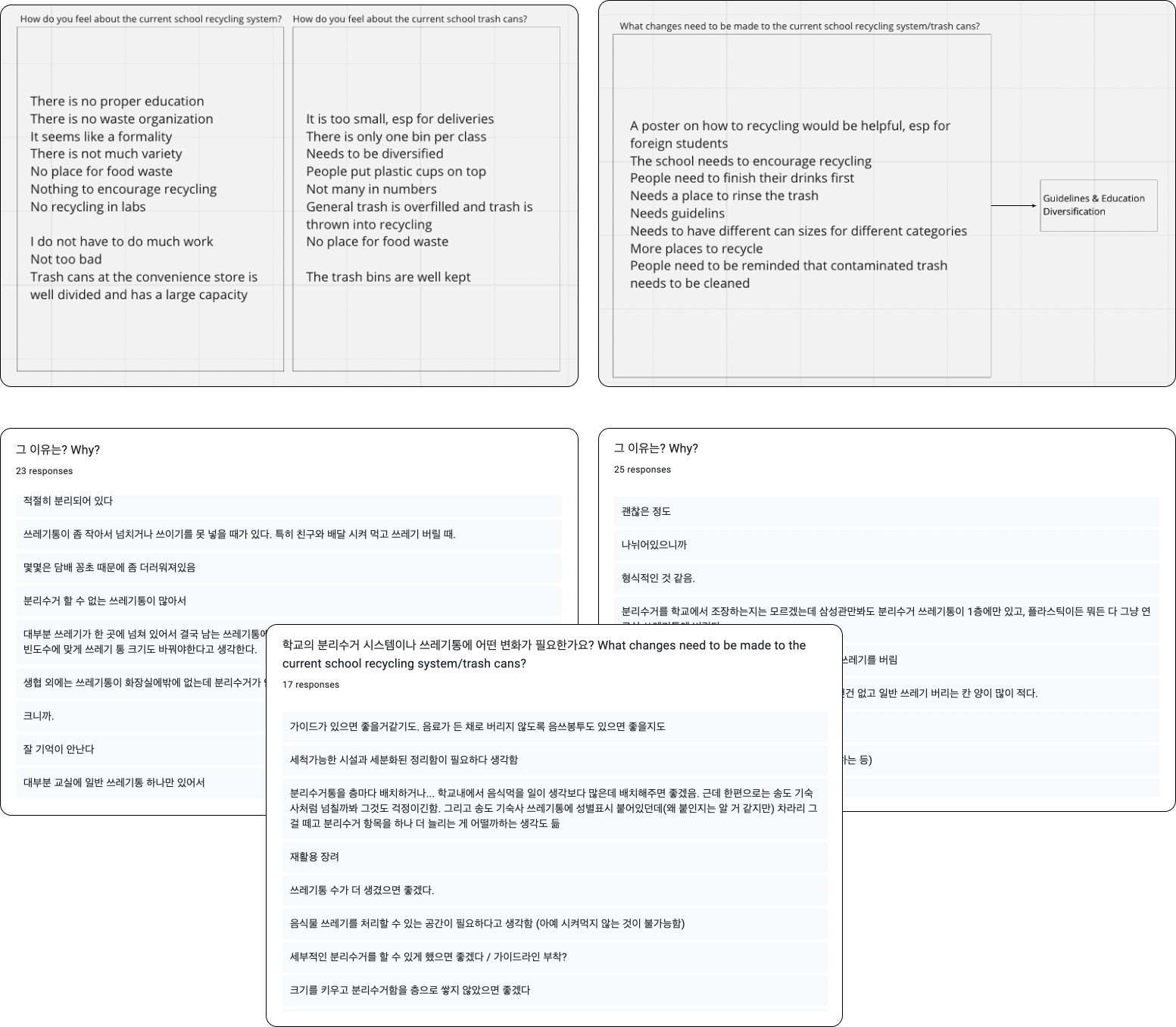
We also conducted an interview with the Yonsei administration to see how the campus handles their current recycling system and if there are any problems they have found. We also wanted the administrative angle in regards to how a recycling design system overhaul might be implemented.
From that interview, we found that there were overlaps between the problems students were facing and the problems administration saw- both wanted more bins with more categories for sorting waste.
The main barrier administration cited was how expensive the campus bins are (₩600,000 won ~$440 USD).
After our initial research, we went deeper, exploring existing designs solutions that had been created to encourage recycling, looking at what worked and didn’t work in order to find out the errors and guidelines of recycling.
We looked at a couple examples of designs created to improve recycling behavior and we saw that each sought different avenues: targeting knowledge and information (stickers & infographics), manipulating waste products themselves (bottles & produce), and changing the physical recycling and waste bins (a design initiative).
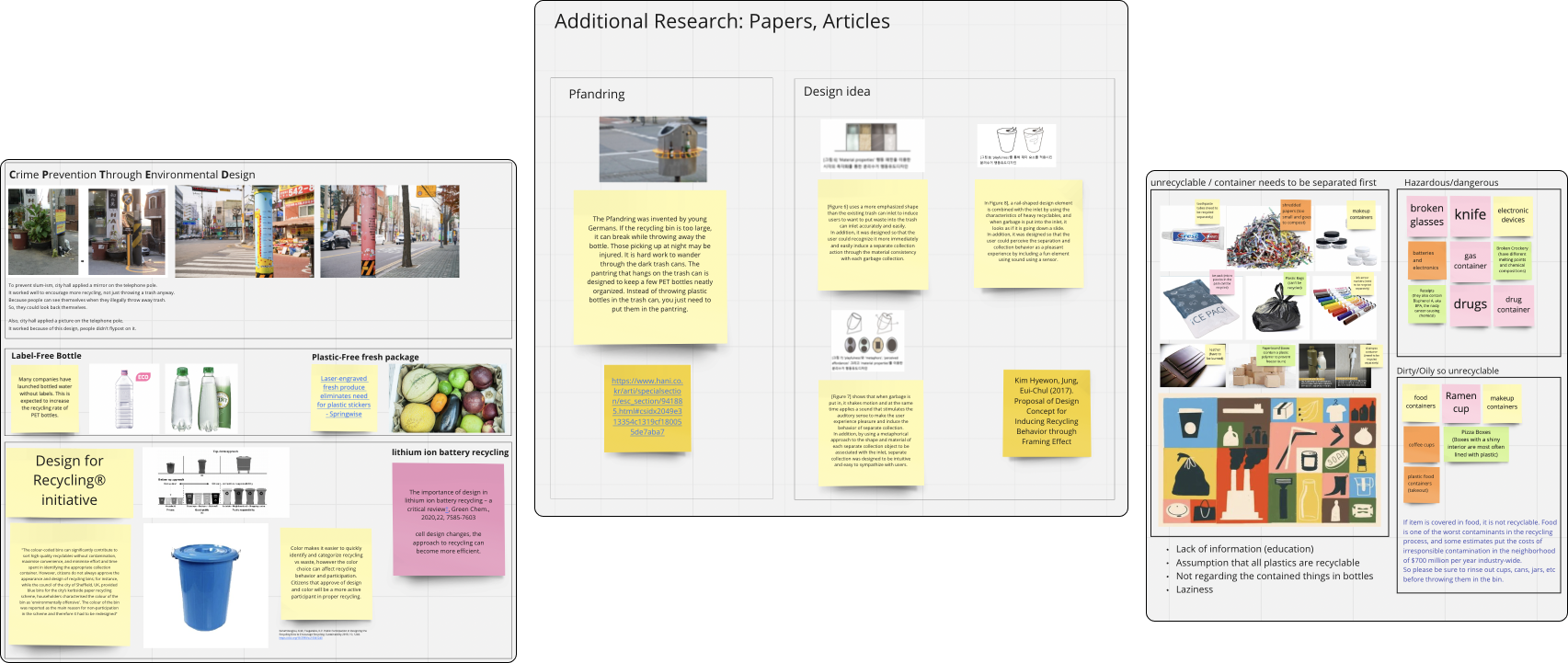
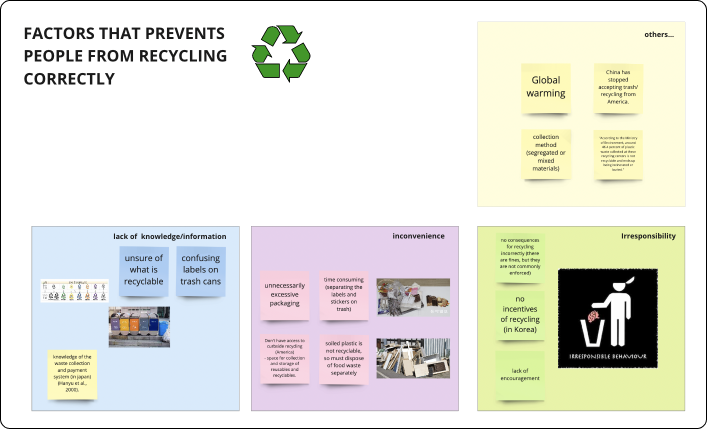
What are the barriers to proper recycling behavior and why is it that people don’t recycle properly?
Across our initial research, the main barriers that we discovered were...
From these factors, there are several problem areas we could target such as...
From the pain points we discovered through primary and secondary research, we decided that redesigning the physical trash can would be the best way to address the points of overflow and incorrect recycling behavior.
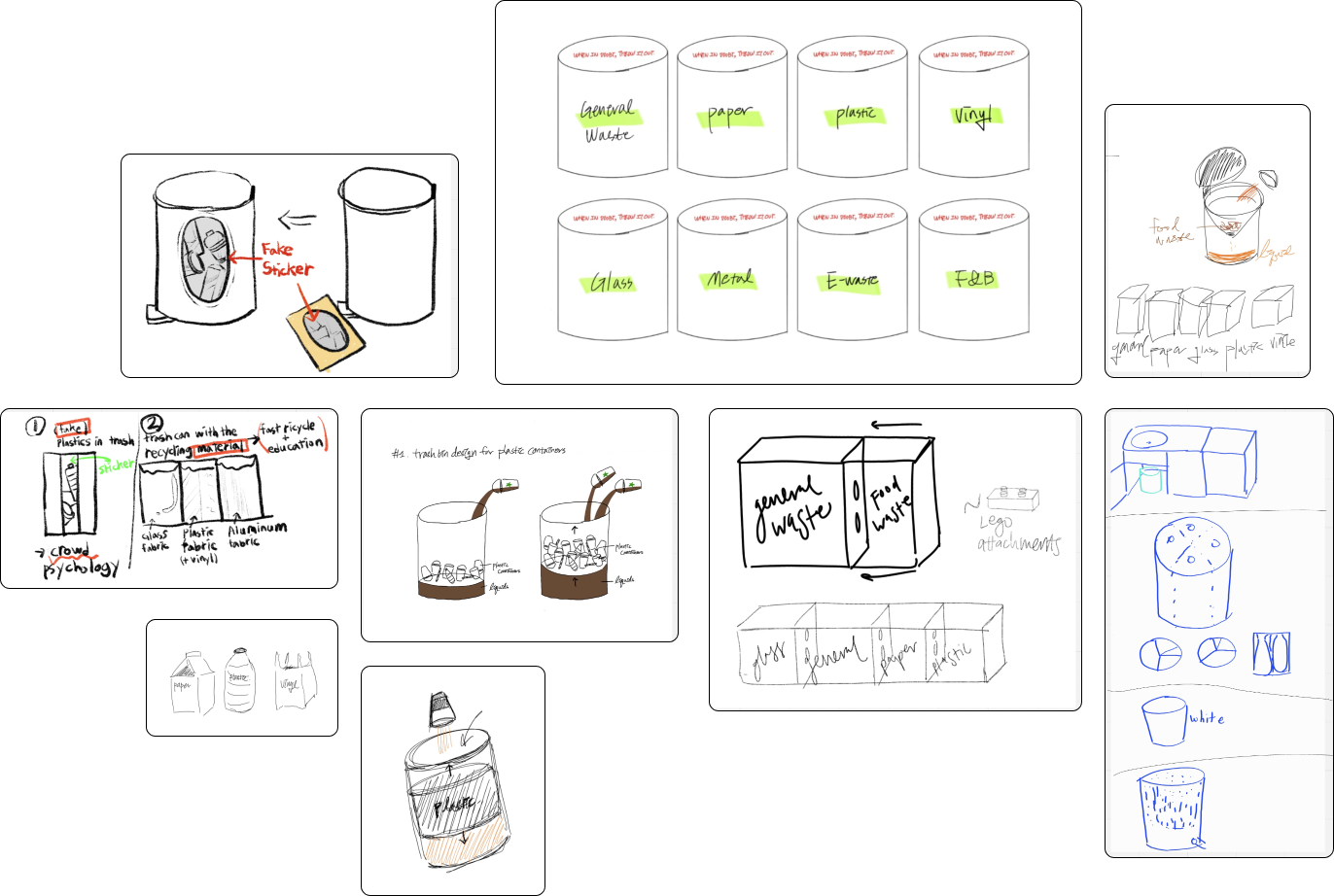
After a comparison of various concepts, we chose a design with a trash category divider built into the trash can.
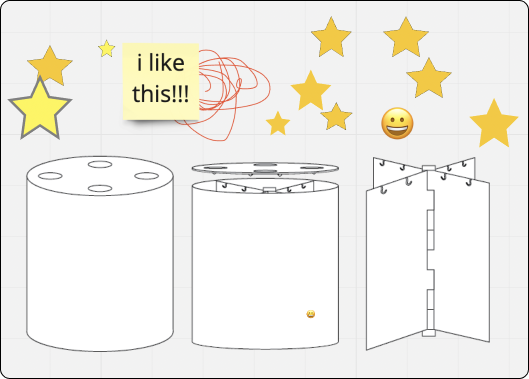
The design we chose to continue with was the best in terms of scalability and testability.
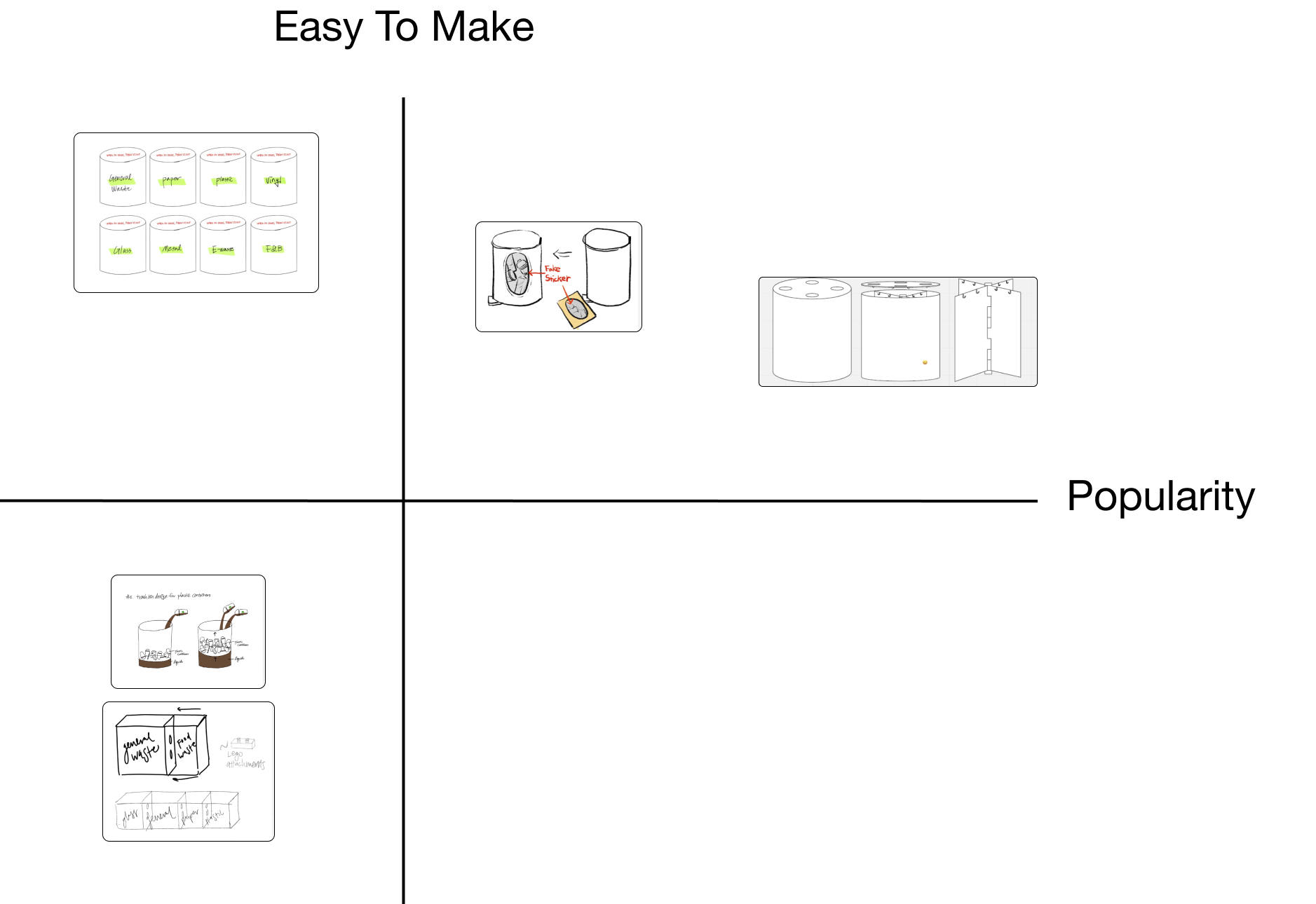
The concept was a bin design that would have flaps that would move as trash and waste-filled the separate compartments. If there was more waste in the general waste section, for example, the flaps would move to accommodate for this, making the other, less used sections smaller.
This would result in the dual ability to compartmentalize different waste categories as well as optimizing the space for waste and preventing waste overflow.
.png)
We constructed rough prototypes of our design to test functionality and whether or not they helped achieve the behavior we wanted. Set the prototype bins around the Samsung Design building on the Yonsei campus and checked in each day.
.png)
To get a sense of whether our design was working or not, we talked to the janitors of the building as well as the students who happened to use our prototype trash cans. Here were the main points of feedback they gave us along with points we observed...
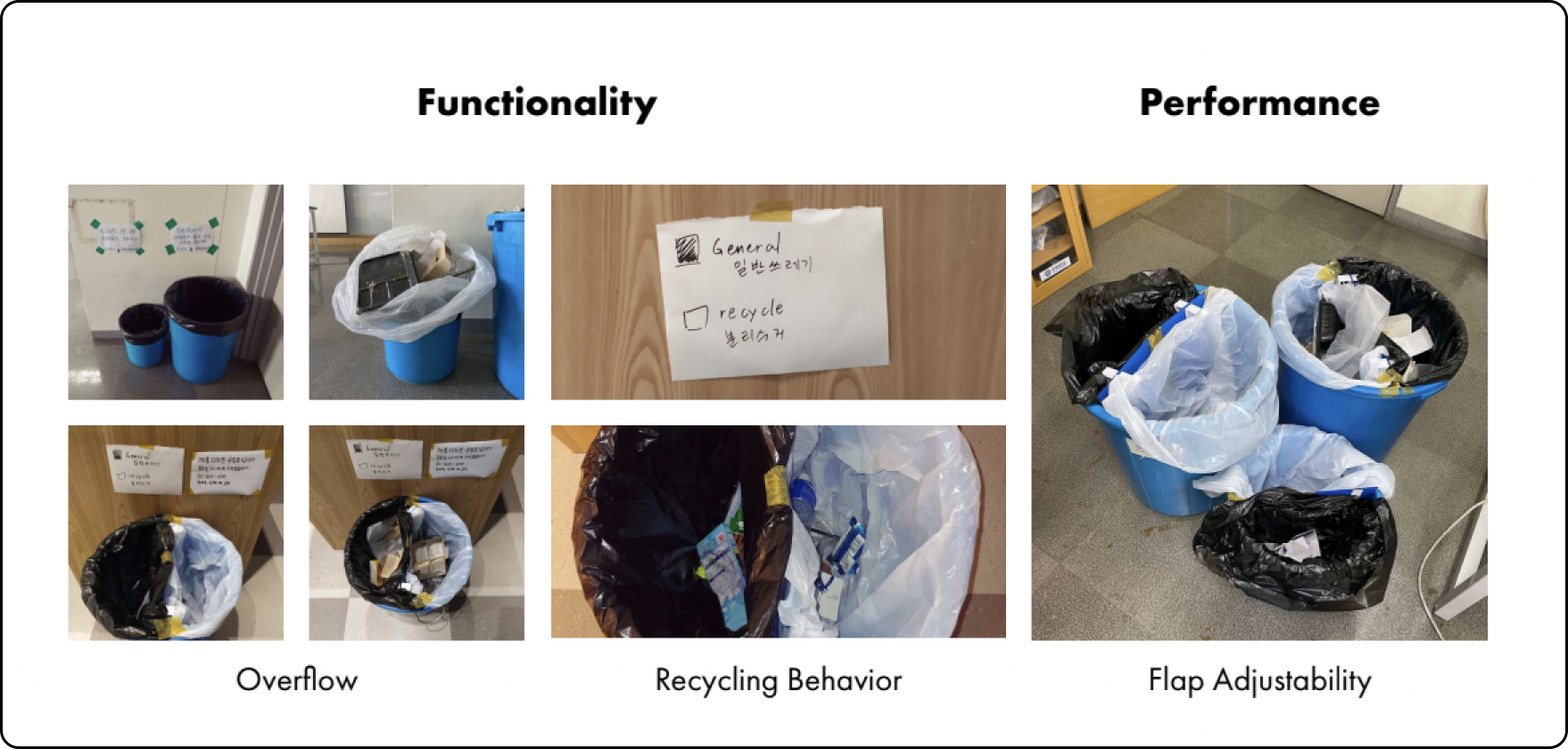
After creating this first prototype and taking into account the user feedback over the course of our testing, we developed a second prototype that streamlined the divider mechanics and using the affordances to increase categoric recognition.
.png)
.png)
The main change made was to the dividers, changing from solid panes separating each waste category to a hook and band system the cut down on materials and allowed for easier color coding, increasing the user's recognition of the different categories.
One logistic problem that we ran into was how we would implement our product design without creating an entire bin product that the school would have to purchase. We also looked at increasing the feasibility of this as a compact product solution.
Was there a way to create a design that would not require altering the existing bins?
A key element of our redesign was our understanding of how our product might perform in consumer markets. How could we make it easily scalable and applicable to more consumer need scenarios? Creating an entire product unit is too costly and inefficient, resulting in our design ideation of a detachable and customizable product.
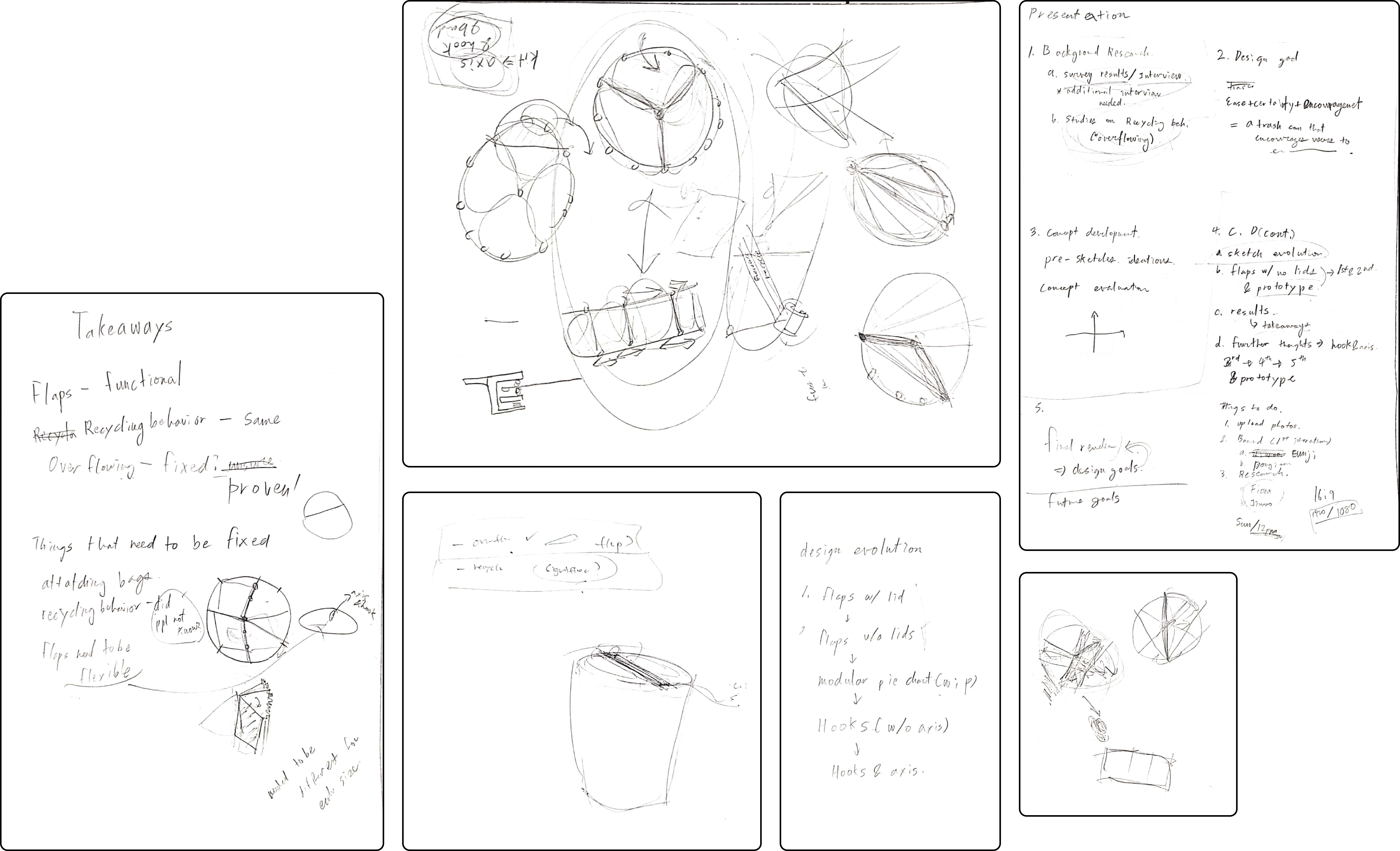
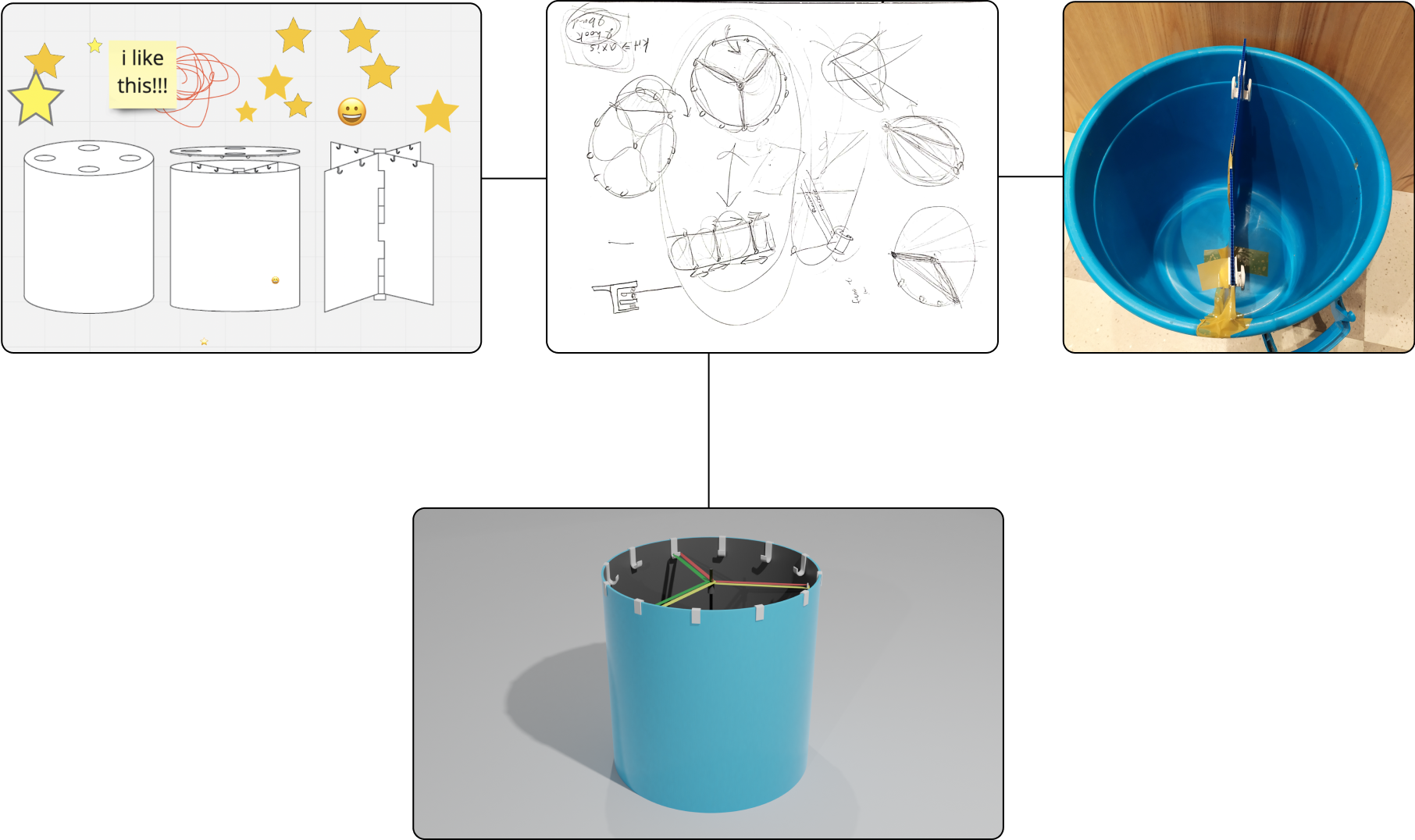
Our revised design includes an axis down the center of the bin that the separators, color-coded elastic bands, attach to. There are also hooks that attach to the edges of the bin to hook trash bags onto, making each section movable. The labeled, color-coded bands serve as a signifier to the user, telling them which section is for what category of waste.
In this way, the lack of overflow affords better recycling behavior allowing for ease of recycling. In addition, the color-coded and labeled bands serve to reduce and prevent incorrect recycling behavior as each section is now clearly identifiable and easy to distinguish, solving our main problem from earlier.